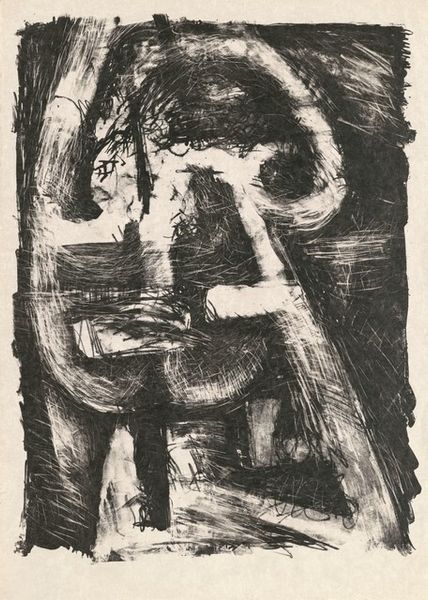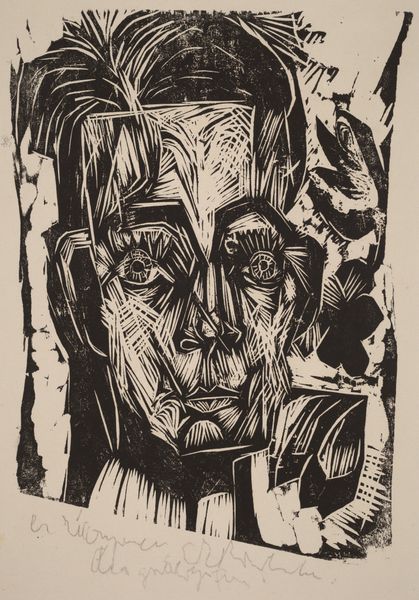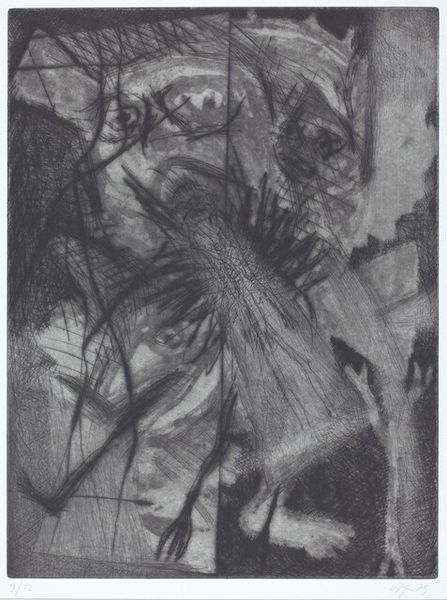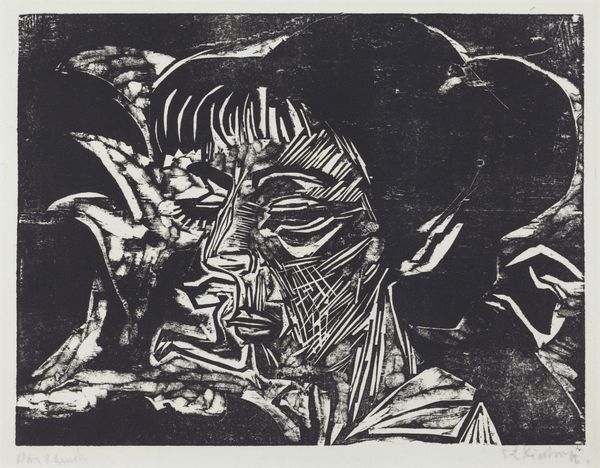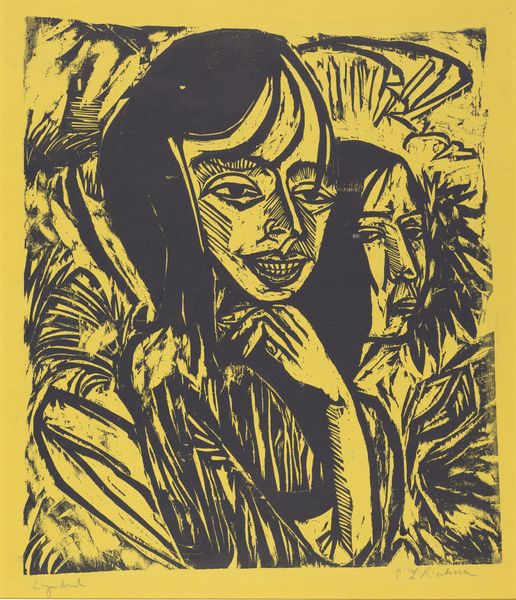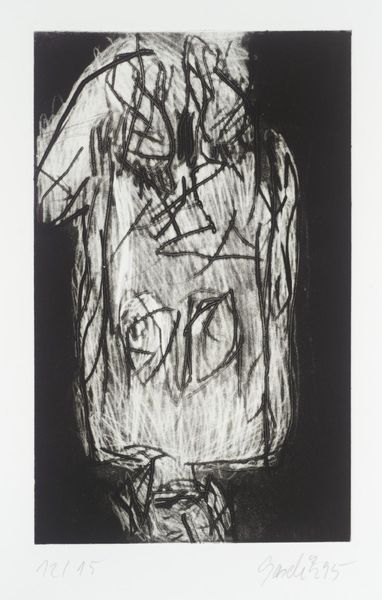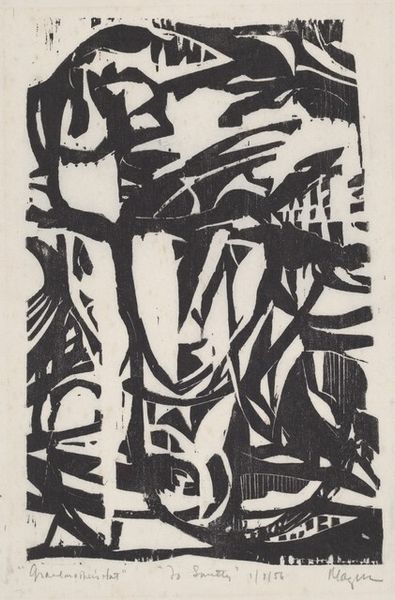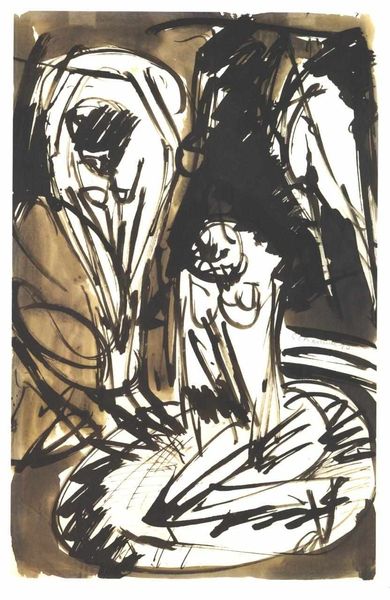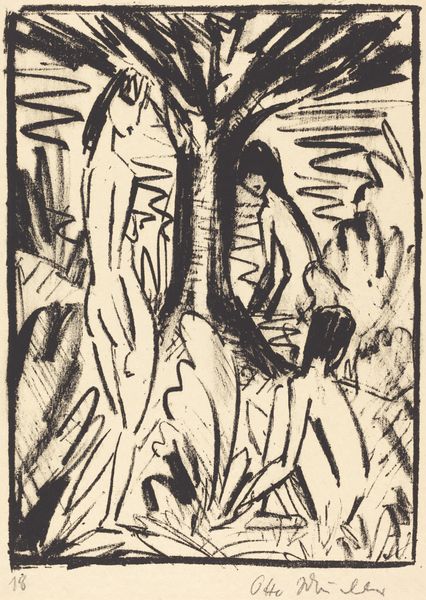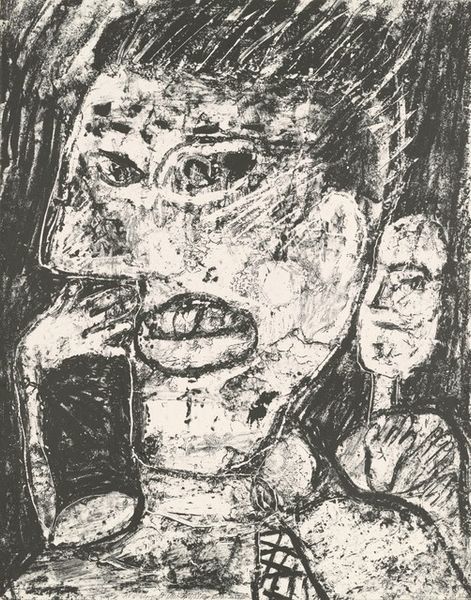
print, woodcut
#
portrait
# print
#
caricature
#
german-expressionism
#
figuration
#
expressionism
#
woodcut
#
line
#
portrait drawing
Dimensions: sheet: 47.2 x 41.8 cm (18 9/16 x 16 7/16 in.)
Copyright: National Gallery of Art: CC0 1.0
Editor: Ernst Ludwig Kirchner's woodcut, "Girl Dreaming," made in 1918, really strikes me. The stark black and white contrast creates an almost anxious feeling, intensified by the distorted features of the girl's face. How do you interpret this work? Curator: This piece resonates with the anxieties prevalent in post-World War I Germany. Kirchner often employed stark contrasts and distorted figures as you noticed, and in "Girl Dreaming," this becomes a potent symbol. What does the black and white evoke for you, especially considering the historical context? Editor: Well, the lack of color, combined with the harsh lines, almost feels like a visual scream – a reflection of the instability and trauma of the era. It’s a far cry from idealized portrayals of youth. Curator: Exactly. Consider the recurring motifs in Kirchner’s work. Faces become masks reflecting inner turmoil. Do you see echoes of earlier Expressionist portraits here? The elongated features, the unsettling gaze... Editor: I do. It reminds me of Edvard Munch's "The Scream," not just in feeling, but in the way the lines seem to vibrate with tension. It's like the girl's inner state is being projected onto the external world. Curator: Indeed. It's Kirchner’s way of conveying a deeper truth about psychological fragility during that time. The dream isn't necessarily pleasant; it may be filled with unresolved conflicts and fears made palpable. The cultural memory of war finds its way even into sleep. Editor: That’s fascinating. So the title, "Girl Dreaming," is almost ironic, suggesting a potential nightmare rather than a peaceful escape? Curator: Precisely. The symbolism embedded goes beyond mere representation, acting as a cultural mirror, reflecting society's collective unconscious during this critical period. Do you see that resonance now? Editor: Absolutely. It really shifted my perspective to consider the broader cultural implications embedded within the artwork. Curator: Excellent! Analyzing art this way – always considering the layers of context – is essential for understanding not just what an artist created, but why.
Comments
No comments
Be the first to comment and join the conversation on the ultimate creative platform.
